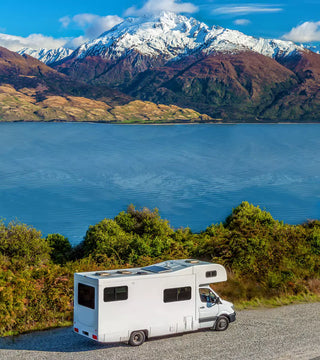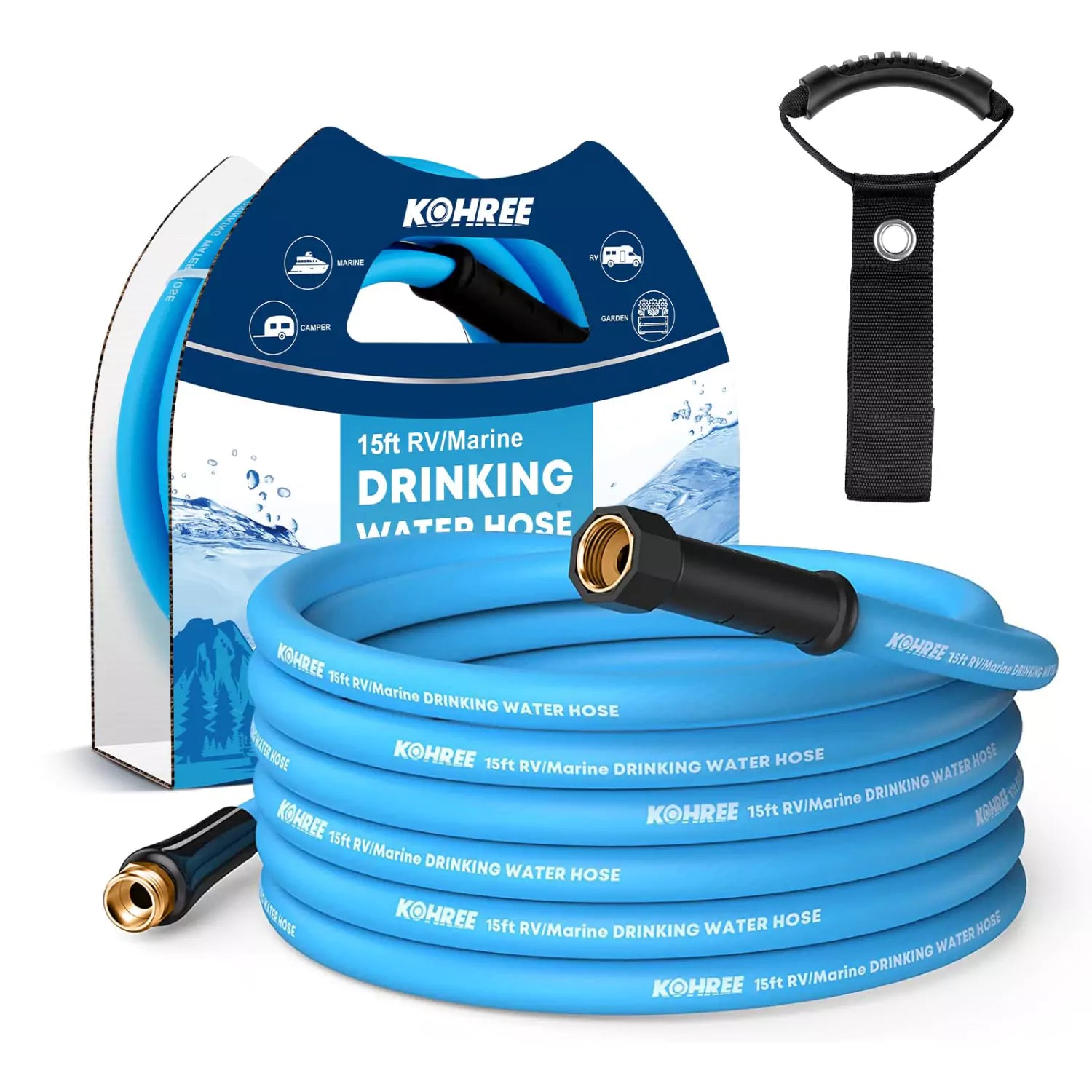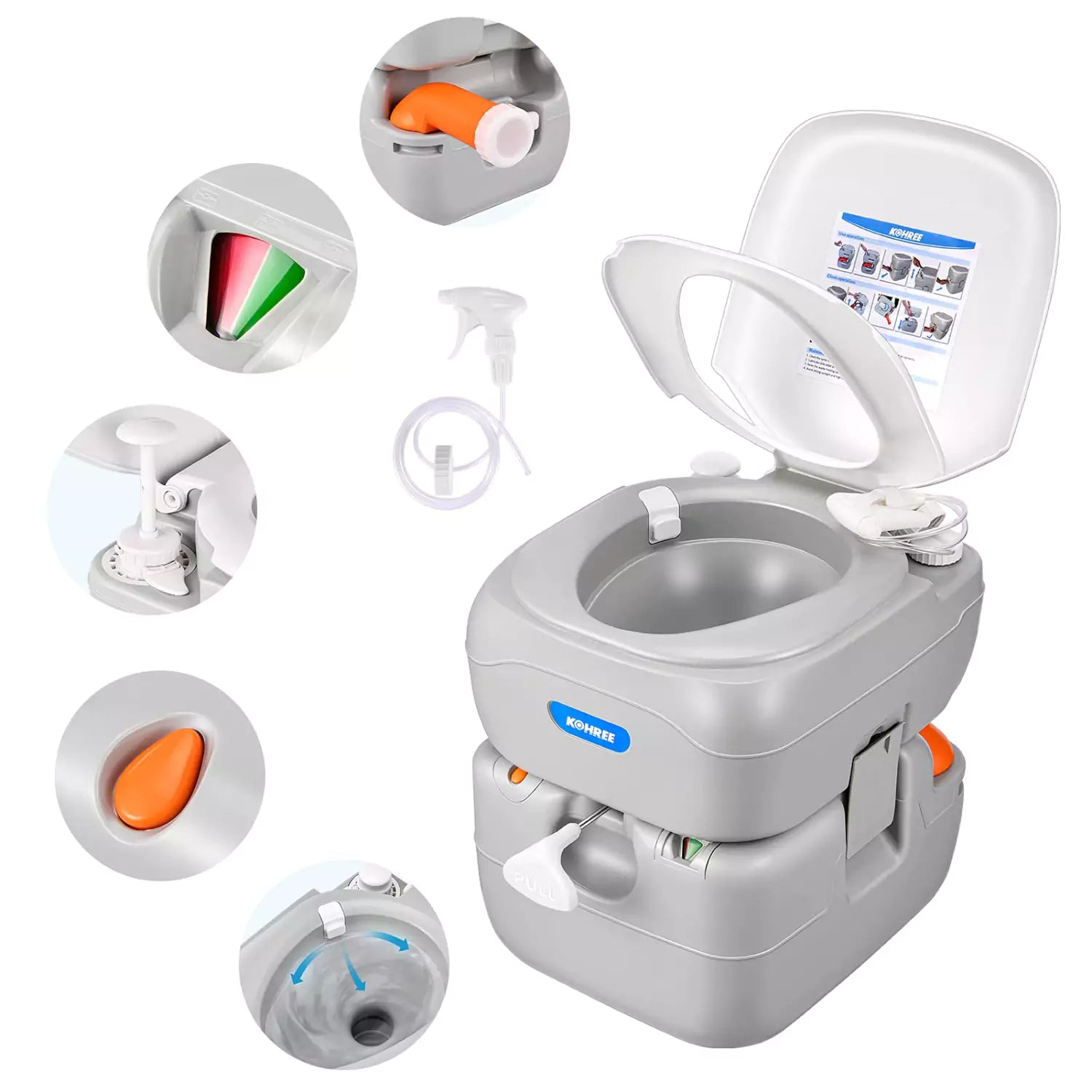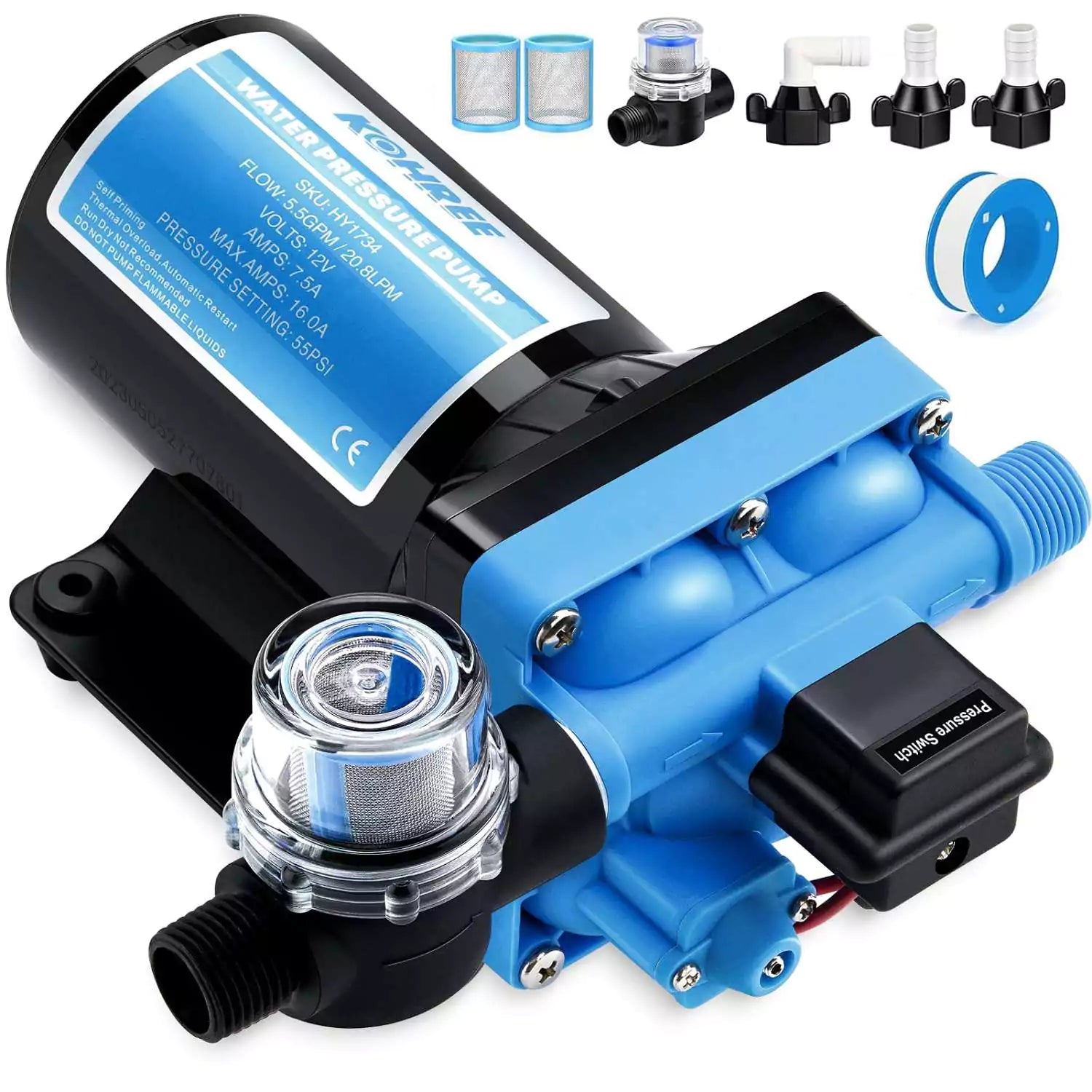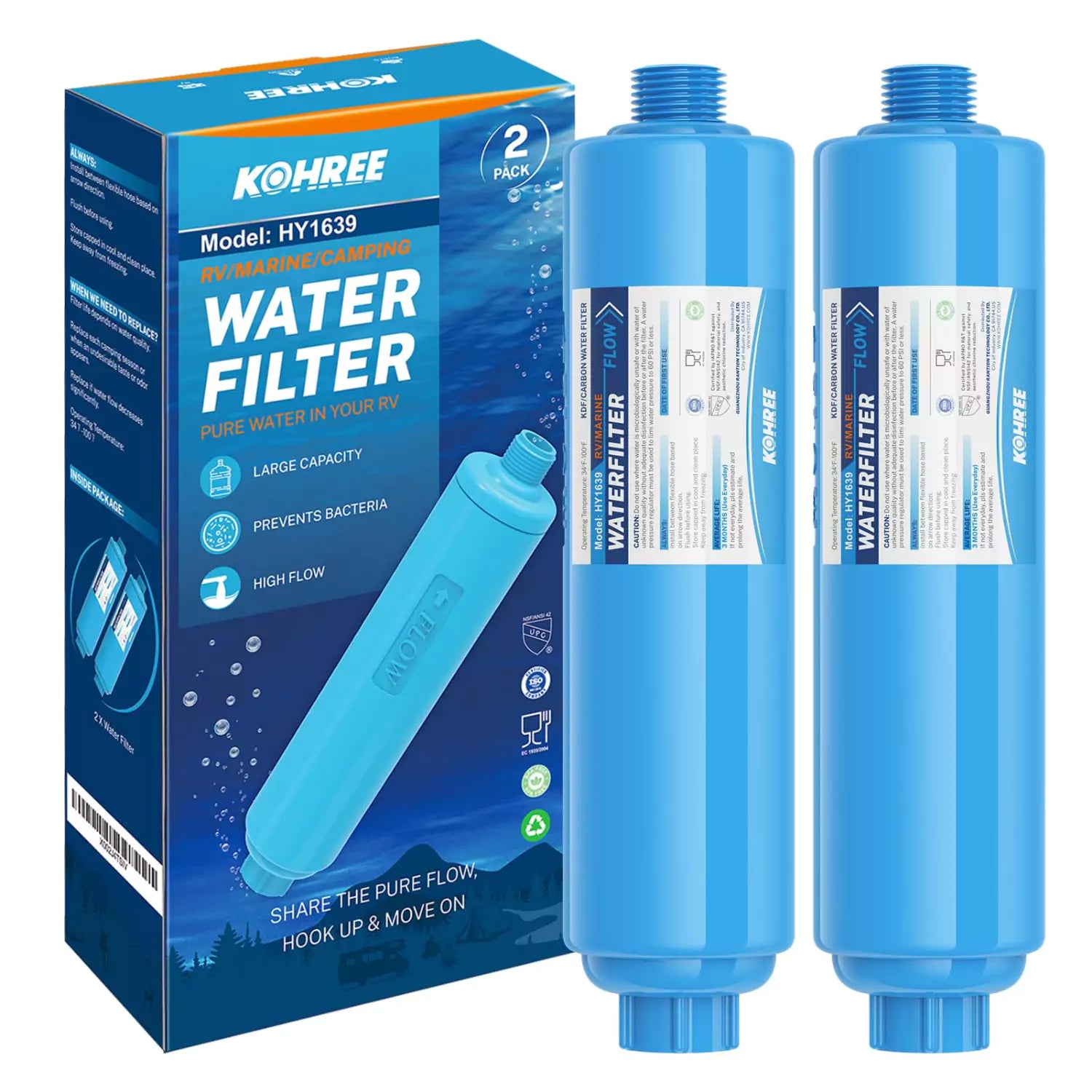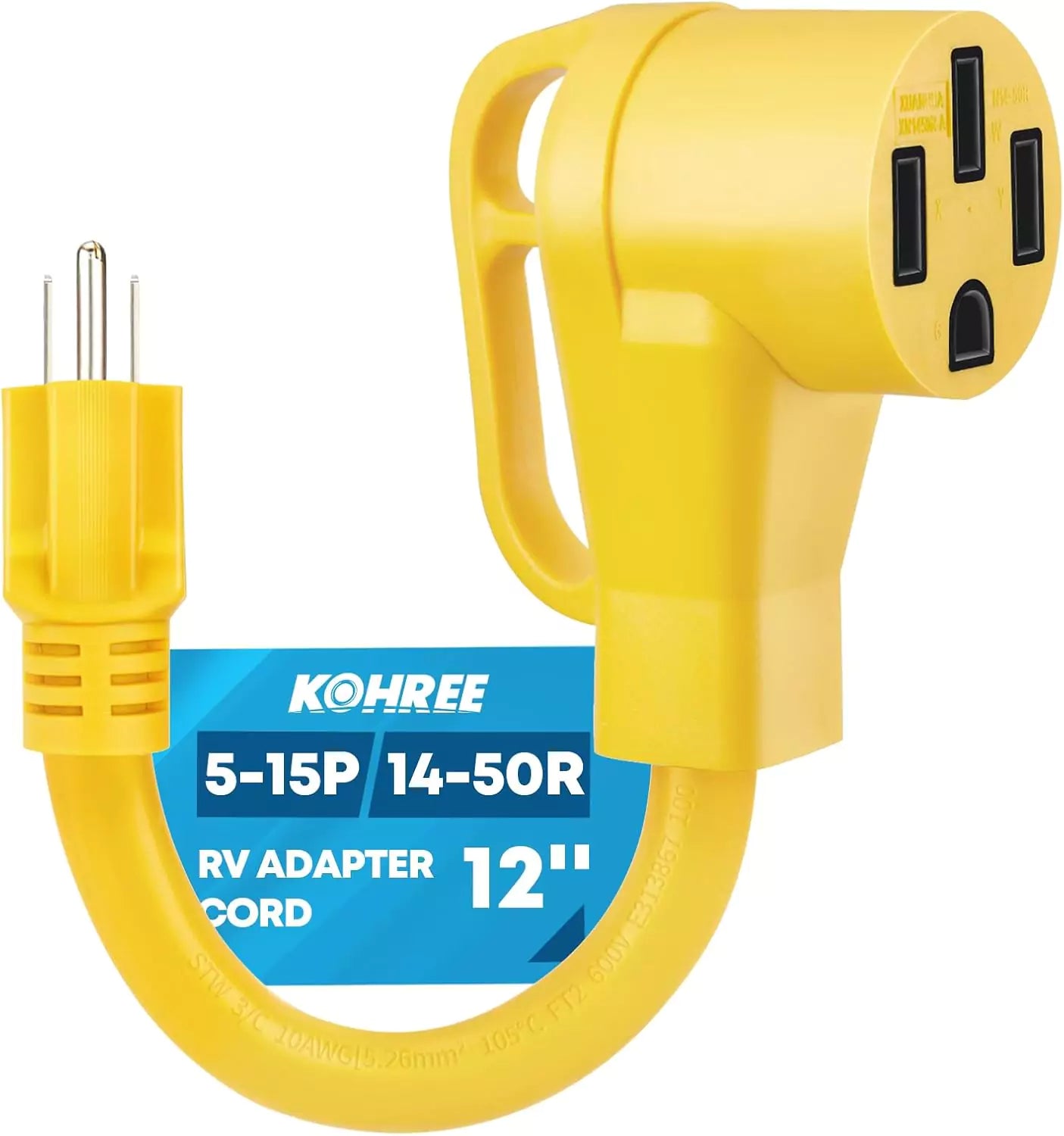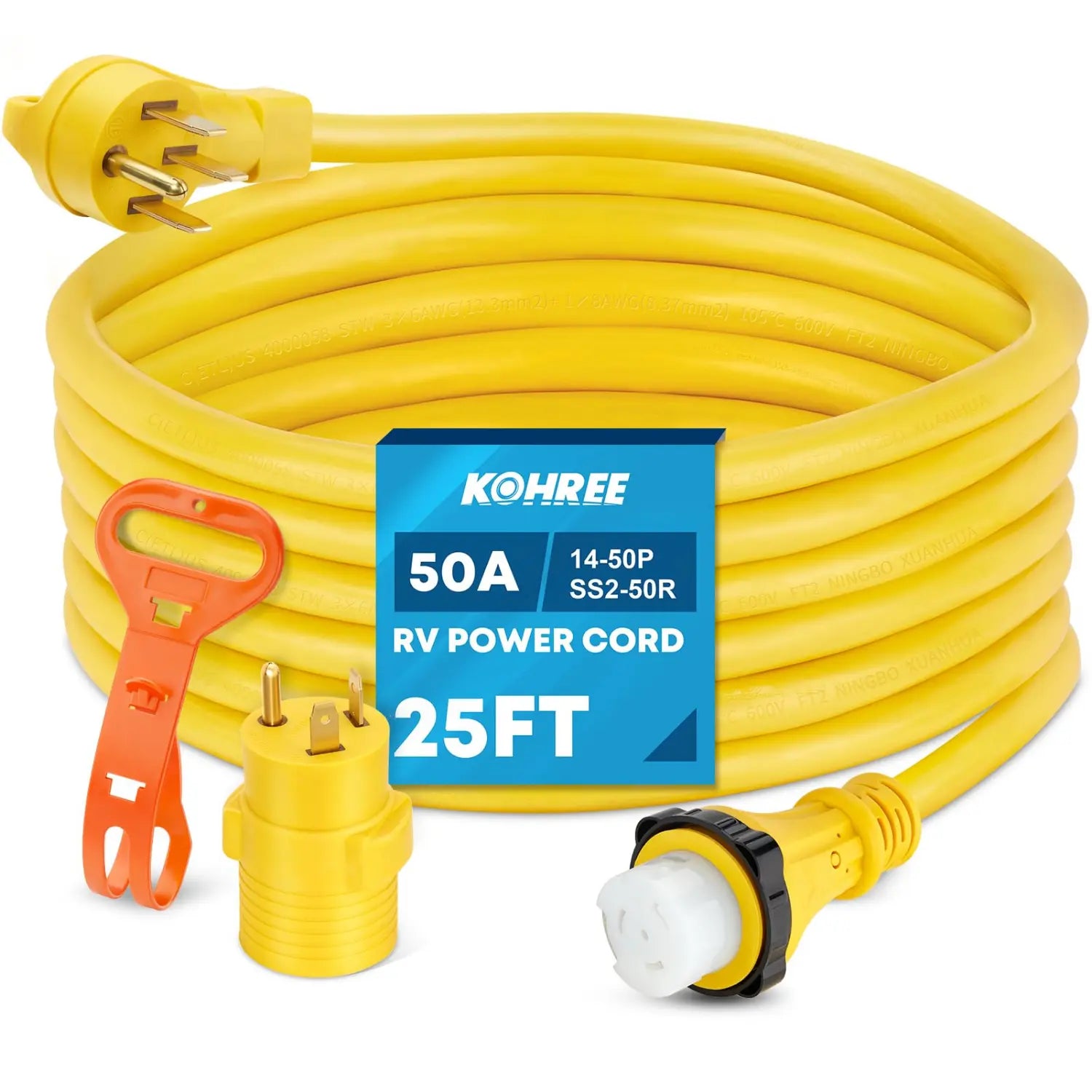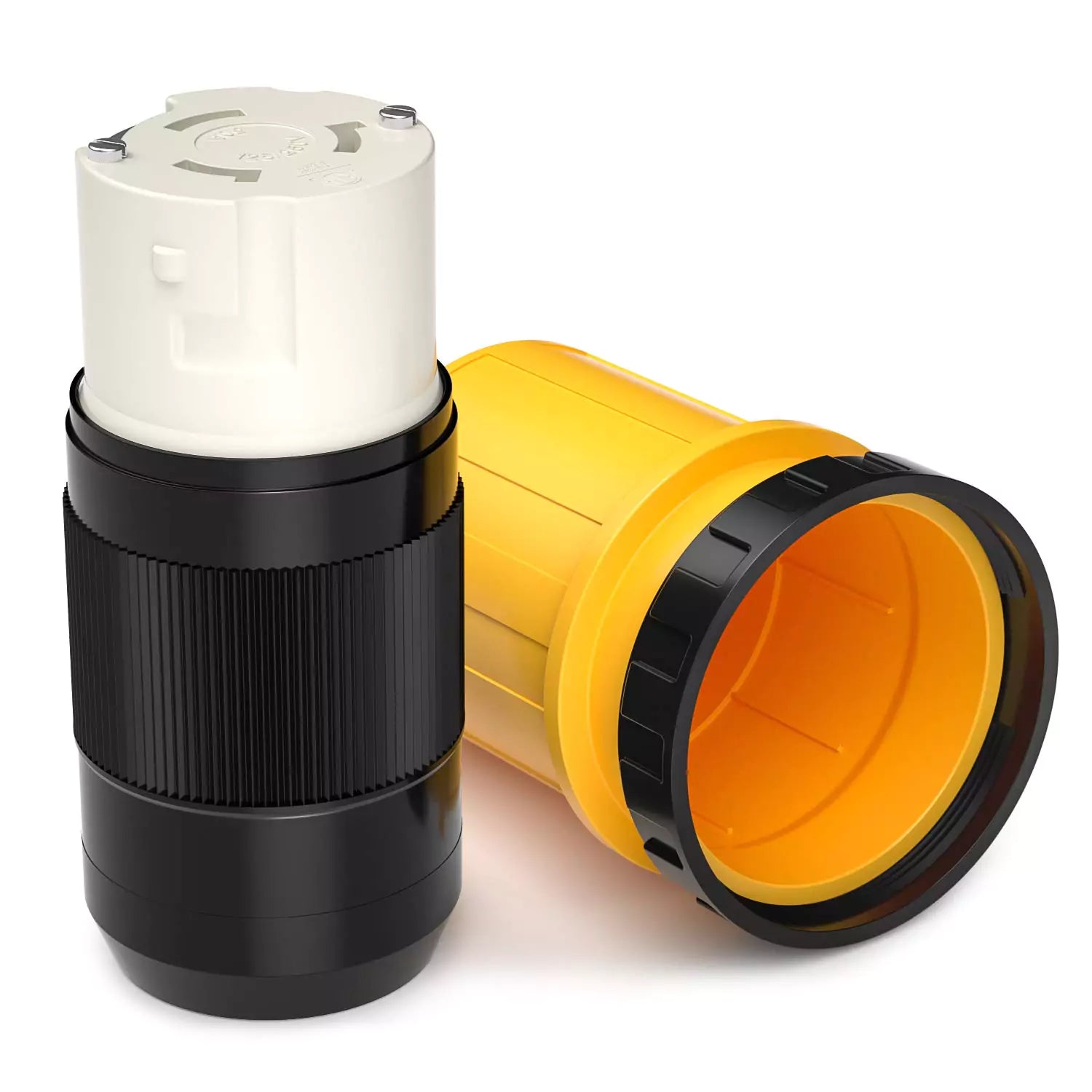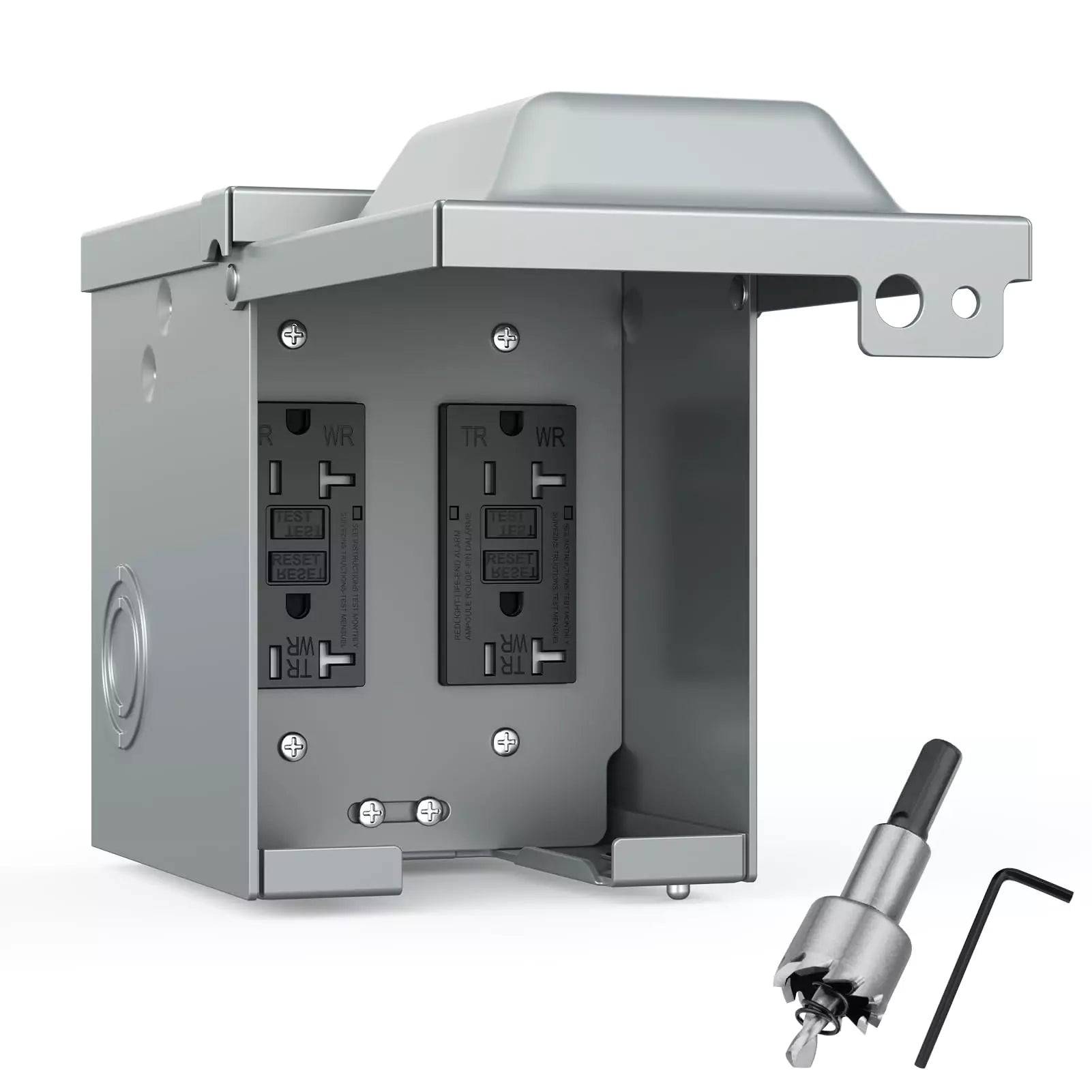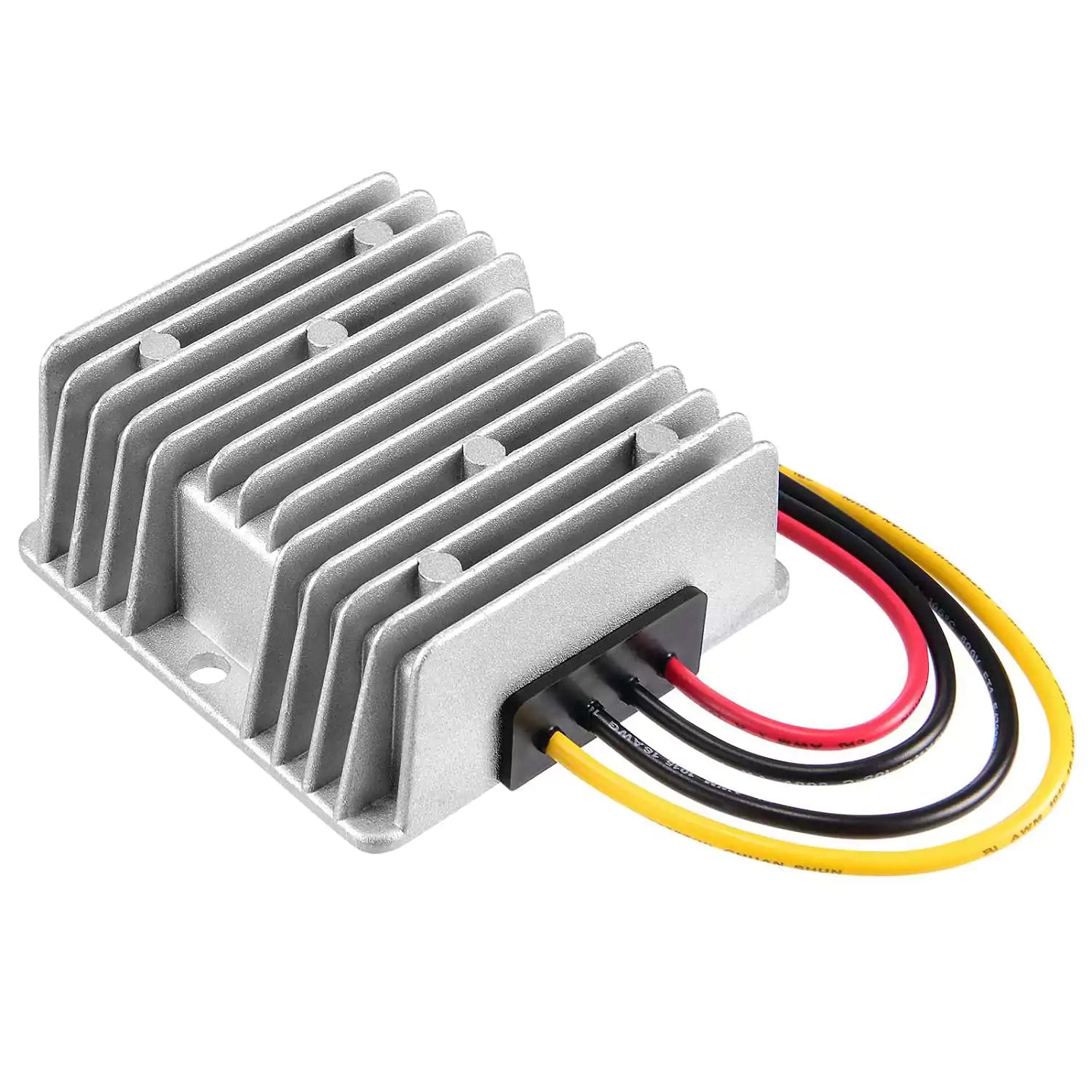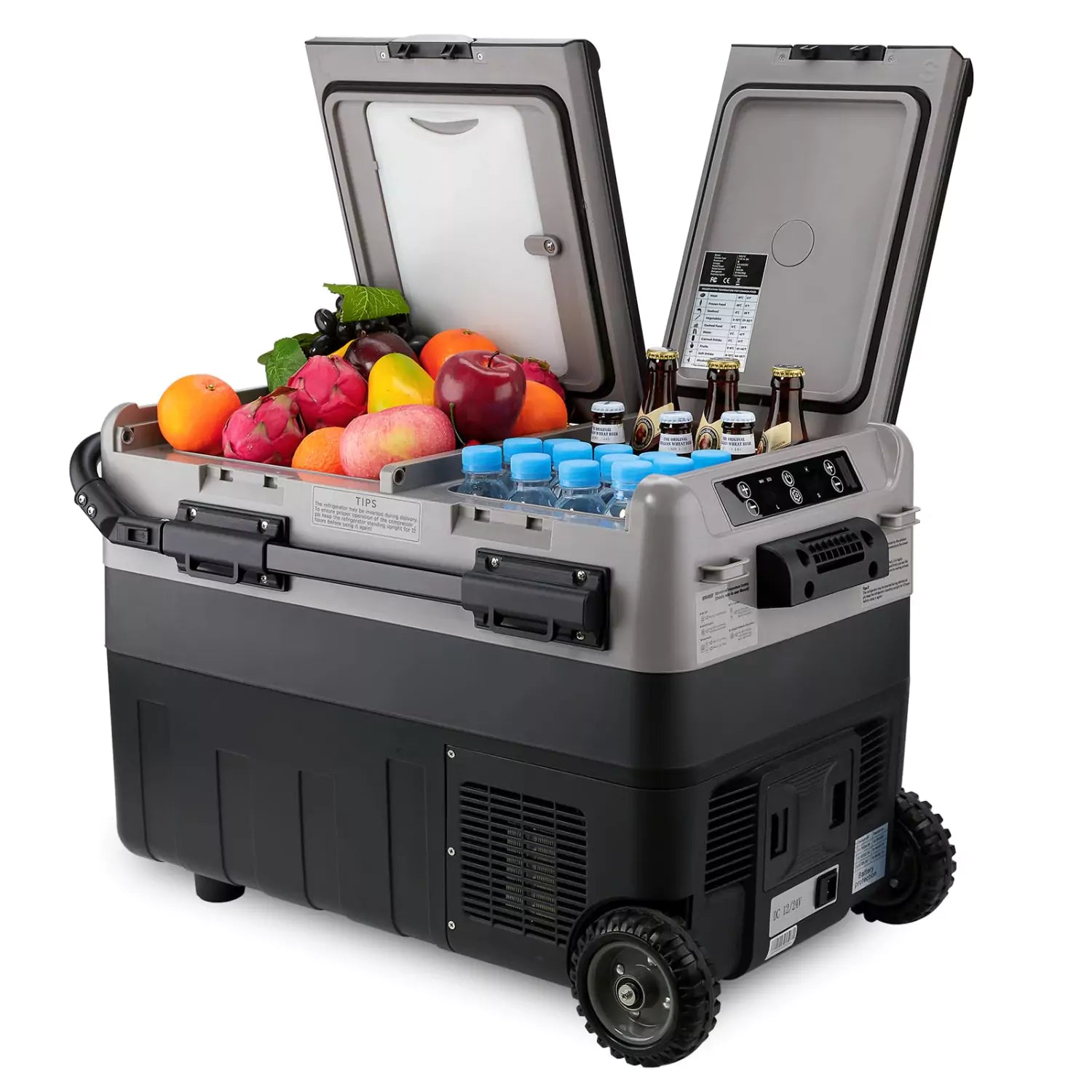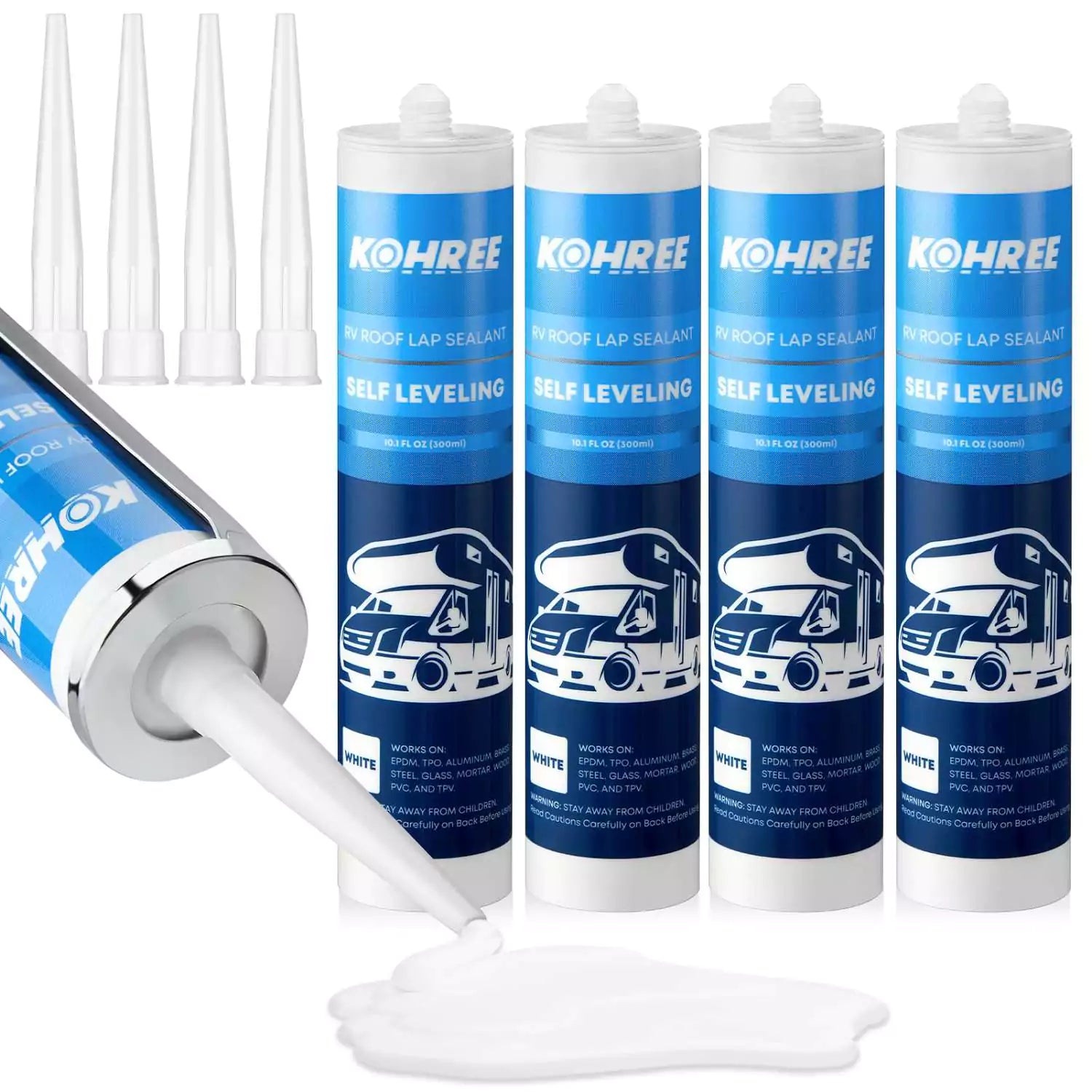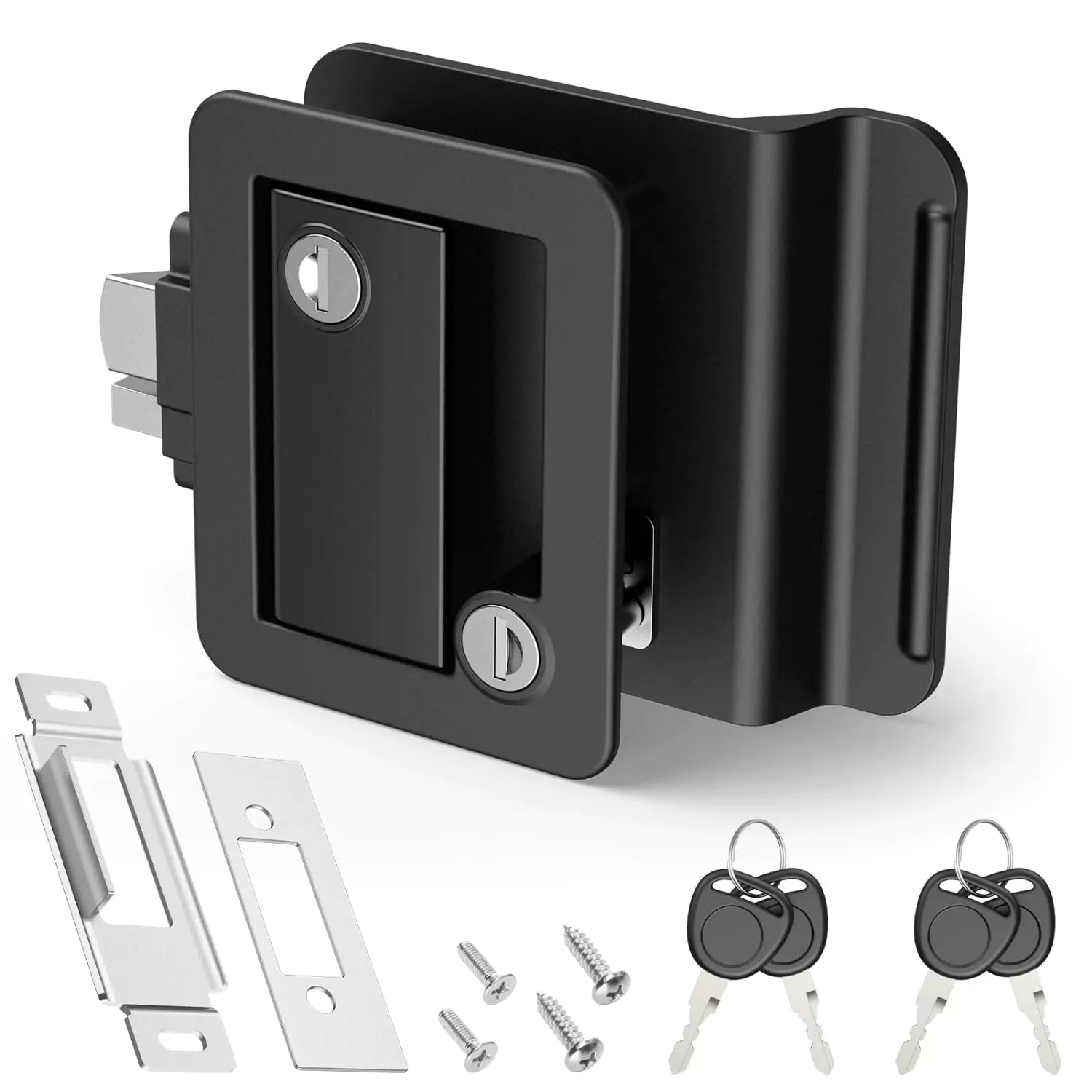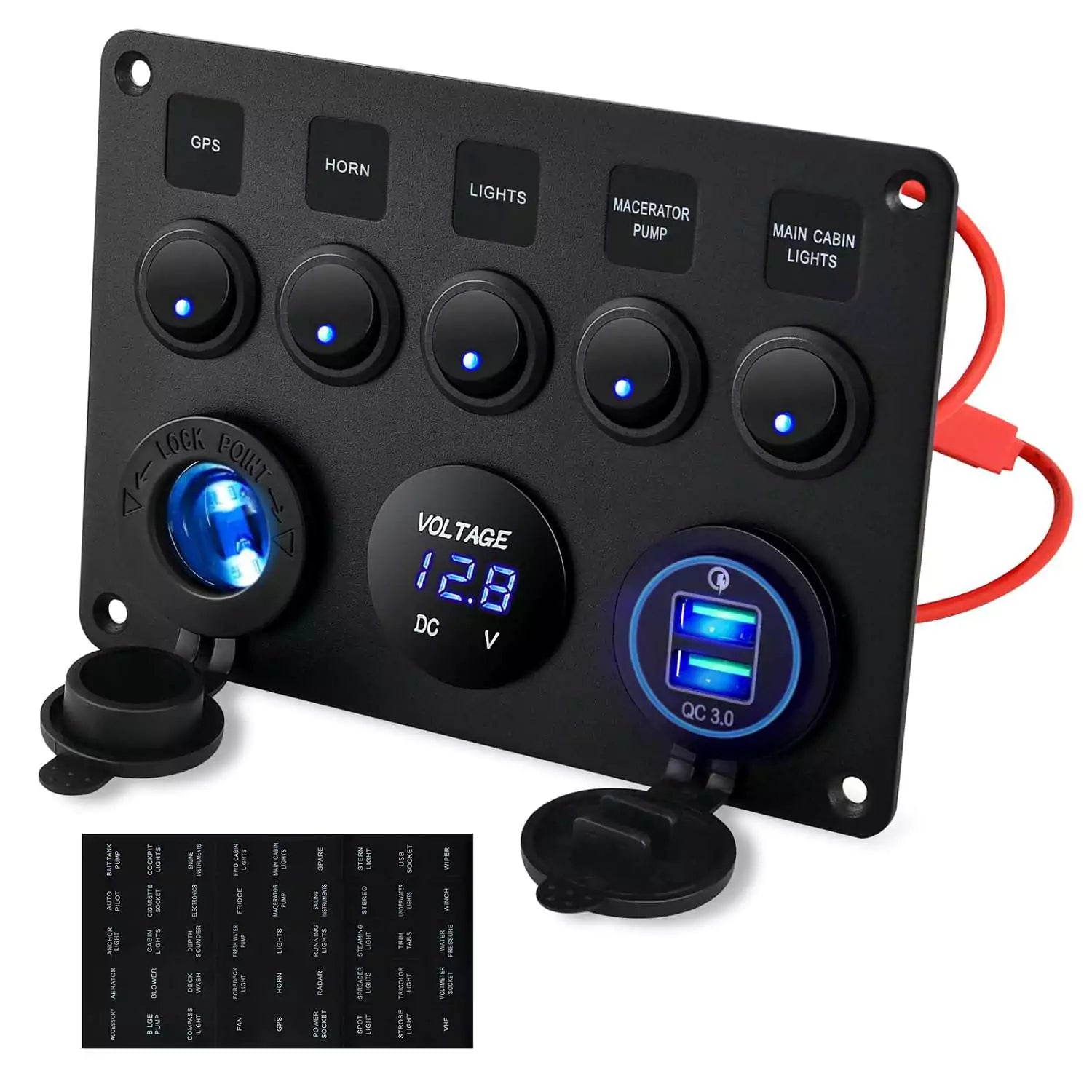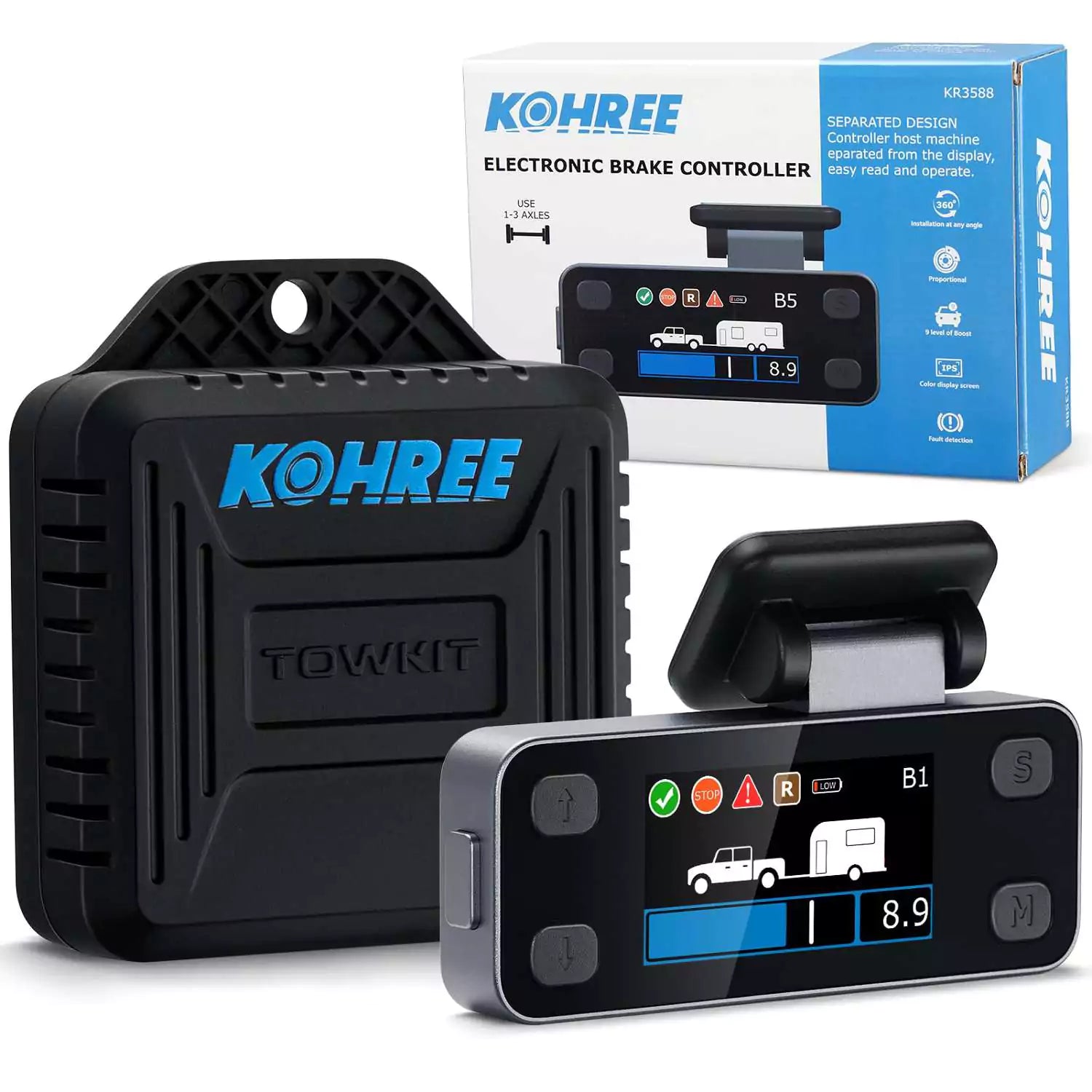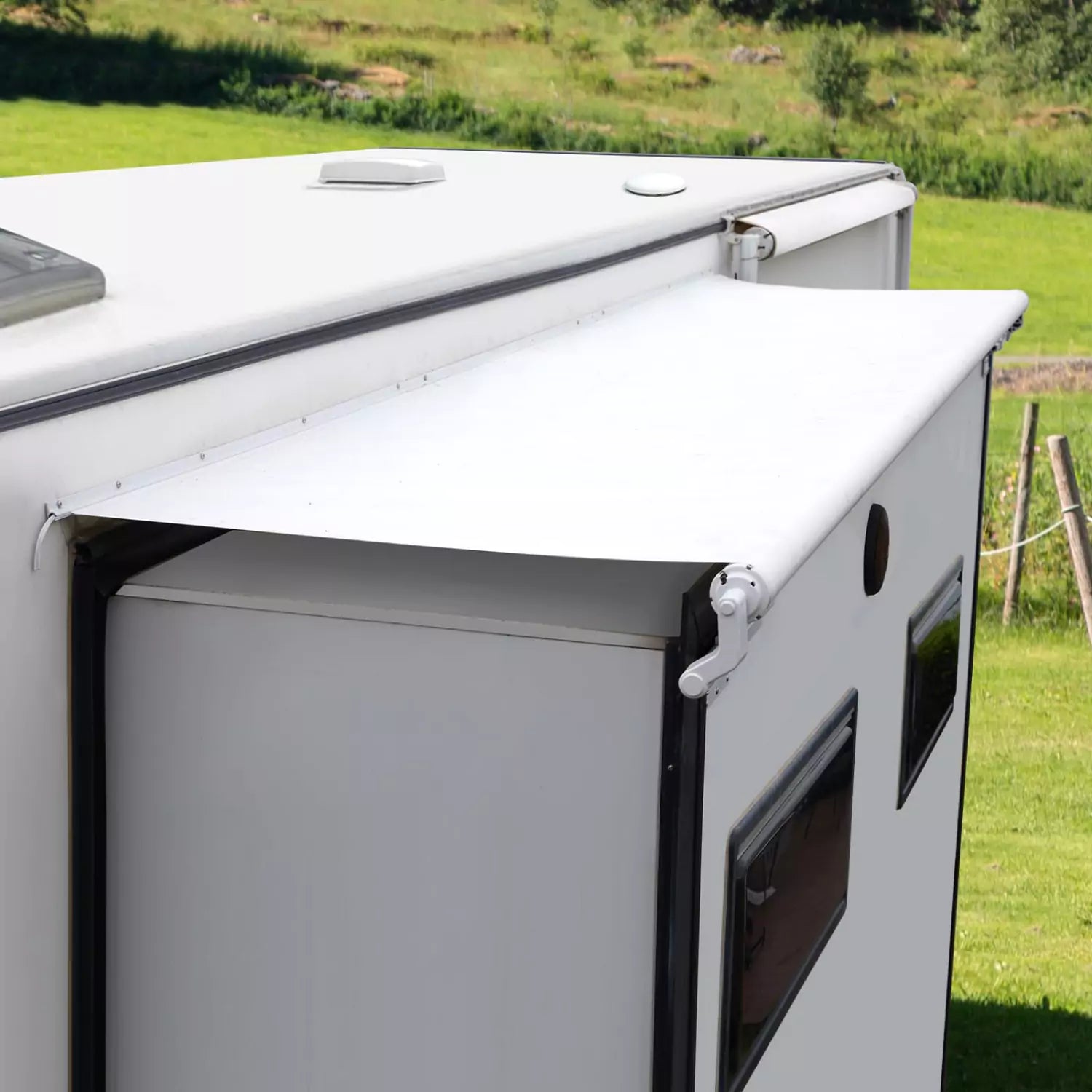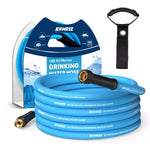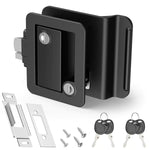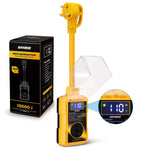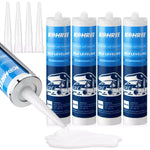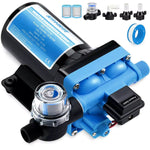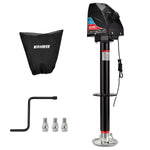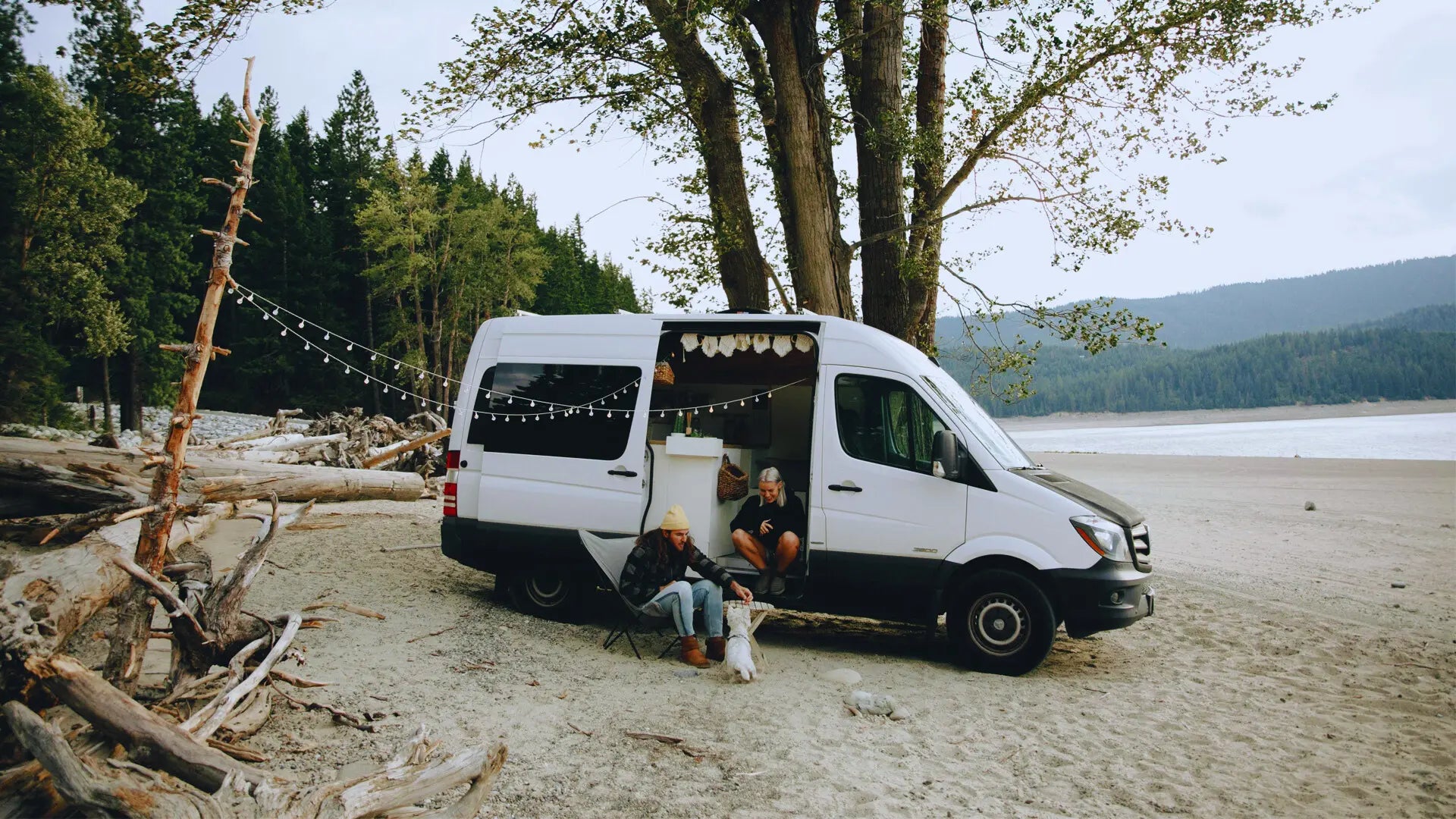Hey there, fellow adventurers and dog lovers! If you're anything like me, your four-legged buddy is an essential part of your traveling crew. After 5+ years of crisscrossing the country with my golden retriever Max, I've learned a thing or two about how to keep dogs safe in RVs while making sure they're happy campers, too.
But let's keep it real. While it's a blast, bringing your dog along for the ride isn't quite the same as just loading up the car for a quick grocery run. It takes a little extra know-how, a dash of planning, and a whole lotta love to make sure your furry friend is just as happy, comfy, and, most importantly, safe as you are. Our goal here? To make sure you know exactly how to keep your dog safe in RV settings, whether you're cruising down the highway or chilling at a scenic campsite.
This guide is packed with everything I've picked up along the way, designed to give you the lowdown on making your RV setup the ultimate dog-friendly pad. We'll cover the must-dos before you even pull out of the driveway, how to handle the journey itself, and how to set up a sweet spot at the campground. So, let's dive in and get ready to make some unforgettable memories with your best buddy!

Pre-Trip Preparation for Safe RV Adventures with Dogs
Getting ready for an RV trip with your dog is kinda like packing for yourself – you gotta do the prep work to make sure everything goes off without a hitch. Think of this as the foundation for smooth sailing!
Essential Health and Safety Checks Before Hitting the Road
Before you even think about putting that RV in "drive", your dog needs a pre-trip check-up. It's like a pre-flight safety list, but for your furry crew member!
Schedule a Vet Appointment: If conditions allow, see your vet with your buddy 1-2 weeks before your trip. They can give your dog a good physical exam, make sure all their core vaccinations are up to date (some campgrounds require proof!), and issue a health certificate if needed – super important if you're crossing state lines. While you're there, stock up on any prescription meds your dog might need for the duration of your trip. It's better to have too much than run out in the middle of nowhere! My vet always reminds me to check for heartworm and flea/tick prevention, too. The most important thing is - Don't want any unwelcome hitchhikers!
Update Microchip Information and ID Tags: Seriously, do this! If your dog somehow gets loose (we don't want an accident), updated contact info is their ticket home. Make sure your mobile number is current. For longer trips, consider adding a temporary tag (it can be a sticker) with your name, phone number, and the address of the RV park you'll be at. It's a simple step that offers huge peace of mind and helps keep a dog safe in RV travels.
Compile an Emergency Contact Sheet: This is your go-to list if trouble pops up. Include your regular vet's number, research 24/7 emergency vet clinics along your planned route, have the ASPCA Poison Control number handy, and note local animal control numbers for areas you'll be staying in. Keep this list somewhere easily accessible in the RV (a visible location like the windshield or a door).

RV Pet-Proofing and Comfort Configuration
Your RV might be your home on wheels, but for your dog, it needs a little tweaking to be a truly safe and comfortable space.
Test HVAC Systems Thoroughly: Your dog relies on you to keep them comfortable temperature-wise. Before your trip, run your RV’s air conditioning and ventilation systems. Make sure they can keep the interior at a steady, comfortable temp, even on hot or cold days. Consider backup options like portable fans or small heaters if your main system is finicky. Keeping the climate controlled is key to RV dogs' comfort, especially when you might step out for a bit.
Eliminate Hazards: Dogs are curious critters! Get down on their level and look for potential dangers. Lock away cleaning supplies and medications – they can be super toxic. Secure drawers and cabinets that curious noses or paws might get into. Remove small items that could be choking hazards. Make sure the trash bin is secured or stored away. Loose items can bounce around during travel and become hazards.
Install Pet Safety Features: Safety first! Consider crash-tested crates or carriers for travel – they offer the best protection in case of sudden stops. Built-in pet barriers can keep your dog out of the driver's area, reducing distraction (which helps keep the dog safe in the car section of the RV!). If your RV floor is slippery, add some non-slip mats or rugs to give your dog better traction and reduce the chance of slips and slides, improving dog safety in the RV.
Use a Car Seat Cover: This is a game-changer. A good dog seat cover doesn't just protect your upholstery from shedding fur, muddy paws, and sharp claws; it also provides a more stable surface for your dog to lie on while the RV is moving. Look for one with a non-slip backing so it stays put and waterproof fabric for those inevitable spills or wet dog moments. It’s an easy way to add both comfort and protection to your RV’s interior, enhancing your RV dogs' comfort during travel.

Behavioral Training and RV Acclimatization
If you're not planning to bring your dog fishing or if you need to accompany your family on a walk in the woods, I suggest it's best to get your dog used to the RV experience before you leave. This is a smart move that helps reduce their anxiety and makes the whole trip more enjoyable for everyone.
Crate Train Your Dog: If you plan on using a crate for travel or when you leave the RV, get your dog comfortable with it well in advance. You can put some things it might find interesting in the crate, such as his favorite training ball or a toy. Make it a positive space. Practice having them stay in it for longer periods, mimicking the time they might spend in it during travel. This is crucial for dog crate stabilization in moving RVs and overall safety.
Desensitize to Movement and Noise: RVs make weird noises and movements that can spook a dog. Let your dog hang out in the RV while it's parked, running the engine or the AC, so they get used to the sounds.
Reinforce Essential Commands: Commands like "stay", "quiet", "leave it", and "settle" are your best friends in new environments. Practice them in distracting situations. A dog that can settle down when asked or stay put while you're setting up camp is a safer, happier dog. This is vital for traveling with dogs in an RV.
Packing Dog Travel Essentials
Just like you have your must-haves, your dog does too! Making a packing list helps ensure you don't forget anything important.
Stock Ample Food and Water: Don't rely on finding your dog's specific food brand everywhere you go. Pack enough for the entire trip, plus a little extra just in case. Collapsible bowls are awesome for saving space. Consider using food storage containers that keep kibble fresh. If you need to be away for a while, you can also prepare food for your companion using remote-controlled or automatic feeders. If you plan on boondocking, think about water filtration options for you and your dogs, too.
Bring Comfort from Home: Familiar items can be incredibly comforting for a dog in a new place. Pack their favorite toys, a cozy blanket they love, maybe a worn t-shirt that smells like you. Pheromone diffusers or calming sprays can also help anxious dogs settle in.
First Aid and Emergency Supplies: You hope you won't need it, but you gotta be prepared. A basic dog-specific first aid kit is a must. Include things like dog-safe antiseptic wipes, bandages, gauze, medical tape, tweezers (for splinters or ticks!). If you'll be near water, a canine life jacket is super important, even if your dog is a good swimmer. Knowing how to use these items is part of keeping your dog safe in RV life.
Keeping Dogs Safe and Comfortable During Travel
Okay, wheels are turning, music is on, and you're hitting the road! Now comes the part where you manage your dog's safety and comfort while the RV is in motion.
Secured and Restrained Travel Solutions
In a sudden stop or accident, an unrestrained dog can be severely injured or injure someone else. Therefore, you need to prepare safety measures for your beloved pet in advance. Here are some suggested solutions:
Use Harness Seat Belts or Durable Crates: If your pet is small, you can get a harness designed for travel that can be buckled into the RV's and car's seat belt system. Even better, a properly secured, crash-tested crate offers the best protection in a collision. Make sure the crate is the right size – big enough for your dog to stand up, turn around, and lie down comfortably, but not so big that they can be tossed around inside. Proper dog crate stabilization in moving RVs is essential.
Block Access to the Front Cabin: Even if your dog is crated, it's a good idea to use a gate or barrier to keep them out of the driver and passenger area while you're driving. This eliminates the risk of them getting underfoot, hitting controls, or becoming a projectile during sudden braking.
Protect Seats and Flooring: If you don't want your dog to be confined to a crate in the back of the car, the best way is to get a car seat cover with a built-in seat for your companion. This prevents your dog from sliding around on slick upholstery or flooring. The built-in safety seat allows your dog to lie quietly in the back seat, and the mesh divider in the middle allows you to interact while avoiding excessive distraction, which can make them feel more secure and less anxious. Plus, it protects your RV and car's interior – a win-win! This is where a quality RV dog seat cover really pays for itself.
Get the Kohree premium full bench kit dog car seat cover for your co-pilot now!

Temperature and Climate Management on the Move
Temperature swings can happen quickly in an RV. According to a USDA publication for animal care tech notes, a safe survival temperature for dogs generally ranges between 45°F and 85°F. Prolonged exposure below 45°F (especially below 50°F for vulnerable dogs) can lead to cold stress, while temperatures above 85°F for more than four consecutive hours pose a risk of heat stress. Therefore, it is critical to keep your dog cool in the summer and warm in the winter.
Install Smart Thermometers and Temperature Alerts: Get a thermometer that you can monitor remotely from your phone. Some systems, like Govee, can even send you alerts if the temperature inside the RV goes above or below a certain threshold. This is absolutely vital if you ever need to leave your dog in the RV for a short time (more on that in a bit!). This helps ensure you keep your dog safe and relax in an RV when you're away.
Avoid Overheating & Maximize Airflow: Even with air conditioning or heating, good airflow is important. Use window shades or reflective covers to block direct sunlight. Open roof vents (if it's not raining!) to create airflow. Never, ever leave your dog alone in an RV on a hot day without a reliable way to keep the interior cool. This is extremely important. Temperatures inside can skyrocket in minutes, turning the RV into a death trap. Keep in mind that frequent stops in shaded areas are essential! This point is crucial for your pet's safety. If you have to leave, even for a few minutes, take your dog with you. If you must go alone, use an active climate control system, like air conditioning running, and an RV vent fan with a remote control to help circulate air around you and your pet's resting spot.
Hydration and Physical Needs
Long stretches of driving aren't fair to your dog. They need breaks just like you do!
Plan Frequent Stops: Aim to stop at least every 2-3 hours. These stops are for potty breaks, a chance to stretch legs, and to offer water. Use these opportunities to scout out safe, pet-friendly rest areas or parks, looking for grassy spots away from heavy traffic. Regardless of housing type, dogs must always have continuous access to water, as dehydration can inhibit their ability to regulate body temperature, increasing the risk of heatstroke or hypothermia.
Prevent Motion Sickness: Some dogs get carsick. To help prevent this, try not to feed them for 3–4 hours before you hit the road. Keep the air circulating. Talk to your vet about vet-approved remedies for motion sickness if it's a persistent problem.
Calming Techniques for a Stress-Free Ride
Some dogs are born road-trippers, others... not so much. Helping your anxious dog relax makes the journey better for everyone.
Provide Mental Stimulation: A bored or anxious dog can become destructive or noisy. Long-lasting chews, treat puzzles, or a snuffle mat filled with kibble can keep their minds busy and help them settle down.
Use Sound-Dampening Tactics: The sounds of the road, engine, and air brakes can be scary. White noise machines or even just playing calm music can help mask some of these noises. Blackout shades can reduce visual stimulation if that triggers anxiety. Some crates come with covers that can also help.
Creating a Dog-Friendly RV Destination
You've arrived! Now it's time to set up camp and make sure your dog feels at home in their new temporary backyard.
Setting Up a Secure, Comfortable Base
Building a safe and comfortable temporary space for your beloved pet is crucial, it not only enhances their safety but also allows them to interact closely with you outdoors.
Designate a Dog Zone: Set up a comfortable area outside using the outdoor rugs where your dog can relax in the shade. A portable playpen can be great for this. Inside the RV, make sure their bed is set up in a cozy spot where they feel secure.
Use Tie-Out Systems or Portable Fences: Many campgrounds require dogs to be kept on a leash or contained. A tie-out stake can give your dog some freedom to roam near the RV, but always supervise them when using a tie-out to prevent theft. Portable fences or exercise pens are another excellent option for creating a safe, contained area right outside your door. Always ensure that the tie-out or fence is secure!
Protect Your RV Entryway: Dogs naturally want to see what's going on outside, and the RV screen door is often the first casualty of curious claws. Installing an RV screen door protector is a total lifesaver. It's a sturdy panel that reinforces the screen, preventing tears and accidental escapes when your dog excitedly scratches or leans on the door. It's a small investment that saves you a headache down the road and helps you keep your dog safe in the RV by preventing them from busting through the screen.
Keep Dogs Away from Hazards: Campsites have their own set of dangers. Keep your dog a safe distance from hot grills, fire pits, sharp tools, or tent stakes. Supervise them closely, especially in unfamiliar surroundings.

Campground Awareness and Safety Practices
If you plan to vacation at a professional campground, you will also need to abide by local regulations and be a courteous and respectful camper.
Follow Leash Protocols and Quiet Hours: Most campgrounds have rules about keeping dogs on a leash and designated quiet hours. Respect these rules! It's polite to other campers and helps keep your dog safe by keeping them close. Leash length rules often apply, too.
Scout the Area for Local Wildlife: Depending on where you are, you might encounter deer, squirrels, snakes, or other critters. Keep your dog close on walks and be aware of your surroundings. Learn about any toxic plants in the area and steer your dog away from them. Burrs and foxtails can also be hazards for paws and fur.
Locate Emergency Services: Just like you compiled that contact sheet, familiarize yourself with nearby vet clinics, animal hospitals, and even storm shelters as soon as you arrive at a new campground. Knowing where to go in an emergency is crucial for RV pet safety tips.
Maintaining Hygiene and Comfort
Keeping your dog clean and comfortable is part of the deal.
Provide Fresh Water Daily: While it seems obvious, it's easy to overlook in the hustle of camping. Please remember to provide your dog with plenty of clean water at all times, especially in warm weather. This will help them regulate their body temperature and reduce their risk of heatstroke or hypothermia. Give their water bowls a good wash regularly to keep them clean.
Clean Up Responsibly: Nobody likes stepping in dog poop! Always use biodegradable bags and dispose of waste properly in designated bins. Follow campground rules for waste disposal. Being a responsible pet owner helps ensure dogs are welcome at campgrounds.
Protect Your Pet Paws: Campground surfaces like hot asphalt, sharp gravel, rocky trails, or scorching beach sand can be tough on your dog's paws. Consider getting your dog used to wearing booties or applying paw balms, especially for walks on hot surfaces or rough terrain. Whenever possible, walk your dog on grassy areas to avoid injury to their paws. Additionally, cooling mats can be a lifesaver on hot days.
Encouraging Good Behavior and Socialization
A well-behaved dog makes for a much more relaxed camping experience.
Train Dogs to Stay Calm Around Strangers: Campsites are full of new people and other dogs. Practice having your dog sit calmly as people walk by. Use treats and praise for calm behavior.
Introduce Social Interaction Gradually: If your dog enjoys meeting other dogs, introduce them slowly and on neutral ground. Always ask the other owner if their dog is friendly before letting them greet. Not all dogs are social butterflies, and that's okay!
Emergency Planning for RV Travel with Dogs
Let's talk about the stuff nobody wants to think about, but absolutely needs to. Planning for emergencies is key to keeping your dog safe, no matter what bumps the road throws your way.
Comprehensive Emergency Preparedness Kit
You already have your dog's everyday essentials, but an emergency kit is different.
Build a Dog-Specific Kit: This kit should be separate and easily grabbed. Include items like bandages (for cuts or scrapes), saline solution (to flush eyes or wounds), non-stick pads, vet wrap, medical tape, disposable gloves, tweezers, a pet-safe antiseptic spray or wipes, and maybe a muzzle (even the sweetest dog can bite if injured or scared). Knowing how to use these items is part of being prepared to keep your dog safe in RV emergency situations.
Create an Evacuation Plan: In case you need to leave your RV quickly (fire, flood, etc.), know exactly how you'll get your dog out. Have their leash easily accessible near the door. If you use a crate for travel, have it ready to grab quickly, if possible. Practice getting your dog out calmly and quickly.
Disaster Readiness and Recovery Tools
Beyond basic first aid, think about tools that help you respond to bigger issues.
Know Heatstroke and Hypothermia Signs: This is crucial. Know the signs of overheating (excessive panting, drooling, lethargy, vomiting, wobbly legs) and hypothermia (shivering, weakness, shallow breathing, cold to the touch). Have cool-down gear ready for heat (cooling mat, wet towels, fan) and warming gear for cold (blankets, pet-safe heating pad). Being able to recognize these signs helps you keep your dog safe in an RV under extreme weather.
Attach GPS Trackers to Collars: This is a modern marvel for peace of mind. A small GPS tracker or AirTag on your dog's collar can help you locate them if they get lost. Keep recent, clear, printed photos of your dog on hand, too – they are invaluable for making "Lost Dog" posters or sharing with local shelters.
Keep Vet Records Digitally and Physically: Have a copy of your dog's vaccination records, health certificates, and a list of any medications they take stored securely in the cloud and a physical copy in your RV. If you need to see an emergency vet, having this info ready saves precious time. This is a key part of RV pet safety tips.
Managing Medical Crises on the Road
When something unexpected happens, you need to remain calm. Being prepared helps you act quickly.
Learn to Recognize Distress Symptoms: Pay close attention to your dog's behavior. Subtle changes can indicate a problem. Vomiting, limping, bloating (this is a serious emergency!), excessive drooling, changes in appetite or thirst, difficulty breathing – these all warrant immediate attention. Don't delay if something seems off.
Plan for Aftercare: If your dog needs emergency vet care, think about the logistics afterward. Does your route include towns with vet clinics? Will you need to stay in a pet-friendly hotel while they recover? Having a rough idea of these possibilities can reduce stress during a crisis.
Enhancing Long-Term Comfort and Joy of RV Life with Dogs
RVing isn't just a vacation. For many enthusiasts, it's a lifestyle. Making it sustainable and enjoyable for your dog over the long haul requires ongoing effort and smart choices.
Tech Tools and Gear Worth the Investment
Some gear just makes life on the road easier and safer for your dog.
GPS Collars and Activity Monitors: We touched on GPS trackers for emergencies, but some systems also monitor activity levels, sleep patterns, and even temperature near your dog. This can give you insights into their overall wellness on the road.
Pet Cameras for Remote Monitoring: If you must leave your dog alone in the RV (again, extreme caution and backup power/temp monitoring required!), a pet camera allows you to check in on them remotely. Some even let you talk to your dog or dispense treats. This is another layer to help you keep your dog safe in an RV when you're away.
Portable AC/Heaters and Insulated Mats: While your RV's HVAC system is primary, portable devices such as camping fans and electric heaters can provide localized cooling and warmth for you and your pets during hot summers and cold winters. Insulated mats or beds help keep your dog warmer in cold weather and cooler on hot floors.
Kohree Dog Car Seat Covers: Dogs are natural explorers, but their enthusiasm can lead to drool, spills, and scratches on RV interiors. The Kohree waterproof console guard acts as a protective barrier for leather surfaces, effortlessly repelling messes. A quick wipe with a damp cloth restores cleanliness, ensuring your RV stays pristine while your pup roams freely.
-
Heavy-Duty Support for Larger Companions
For bigger breeds or multi-pet households, stability is key. The reinforced hard-bottom design uses three ultra-durable boards to create an unshakeable platform that supports up to 400 lbs. No sagging or shifting - just a secure, flat space that transforms your RV’s backseat into a rugged, comfortable haven for long adventures.

-
Safety and Calm with Breathable Restraint
Sudden movements can be risky in a moving RV. The built-in dog seat belt prevents choking while safely restraining jumps or lunges. Paired with breathable mesh panels, it promotes airflow and provides dogs a calming window view, reducing restlessness and keeping everyone focused on the journey.

-
Maximize Space with Smart Storage
RV real estate is precious. This 51" x 24" dog hammock creates a spacious, flat bed while freeing up floor space. Oversized side pockets store leashes, toys, or treats within paw’s reach, turning the area into a mobile command center for pit stops or playtime - ideal for organized, stress-free travel.

-
Thoughtful Upgrades for Pet-Friendly Travel
From DIY Velcro zones for attaching accessories to trapezoidal door flaps that prevent scratches, every detail is designed for RV life. The universal fit (thanks to ergonomic buckles and metal snaps) ensures compatibility with SUVs, trucks, and crossovers, blending practicality with cozy comfort.

-
Quick Setup and Hassle-Free Cleaning
Install the adjustable dog seat protector in seconds using headrest straps, and remove it just as fast for a machine wash. This machine-safe, durable solution is a game-changer for pet parents who value convenience, perfect for maintaining hygiene on the road.

|

|

|

|
| Type |
Single seat |
Double seat |
Full bench kit |
| Features |
- Prevent scratches and peeling on car seats.
- Prevent your dog from sliding on the seats.
- Free up your dog's movement space.
- Waterproof and easy to clean, reducing the difficulty of hair removal.
|
| Suitable dog breeds |
Small puppy (Beagle) |
Medium dogs (Golden retriever) |
Large dogs (Golden retriever, Alaskan malamute) |
| Dimension (L x W x H) |
22.1" x 22.5" x 20.5" |
28.5" x 21.5" x 21.5" |
50.8" x 24" |
| Material |
900D scratch-resistant Oxford fabric
|
| Weight capacity |
Up to 400lbs |
| Suitable for |
Car/SUV/Truck, etc. |
Kohree RV Screen Door Protectors: A sturdy RV screen door grille acts as a dual-purpose solution, safeguarding your door from scratches and dents while ensuring pets remain securely inside. Wind gusts, accidental bumps, or enthusiastic paws won’t compromise the door’s integrity or risk escapes. The grille’s robust barrier keeps dogs safely contained, preventing falls or sudden dashes outside, so you can relax knowing your pet is protected. Its discreet design also maintains your RV’s aesthetic, blending practicality with peace of mind.

-
Durable, Pet-Friendly Construction
Crafted from rust-proof, industrial-grade aluminum alloy, this door guard withstands even the most energetic dogs. Tested to endure over 200 lbs of force, it resists bending from scratches, jumps, or persistent nudging. The smooth, non-toxic materials ensure paws stay safe, while the rugged build offers long-term reliability - ideal for adventurous pups or multi-pet households.

-
Stress-Free, Instant Setup
Create a secure space for your dog in minutes with a tool-free installation. Pre-drilled holes and corrosion-resistant screws allow you to mount the grille directly onto your screen door, ensuring a snug fit that stays stable on bumpy roads. No technical expertise is needed, freeing you to focus on prepping for the journey ahead.

-
Adjustable Fit for All RV Sizes
Whether you’re in a compact camper or a spacious motorhome, the grille’s expandable design (18.2" - 31.8" width) adapts to nearly any North American RV door. A gap-free fit means no weak spots for curious noses or paws to exploit, keeping dogs of all sizes safely contained while preserving door functionality.

-
Versatile Safety Beyond the RV
Extend your pet’s safety to patios, porches, or indoor spaces with this multi-use barrier. Its weather-resistant build handles sun, rain, or snow, making it ideal for creating dog-friendly zones or blocking off restricted areas (like staircases) during travel downtime. A single solution supports your pet’s comfort across all adventures.

We mentioned these earlier as pre-trip essentials, but they are also crucial for long-term RV life with dogs.
Routine and Enrichment for a Happy Dog
Consistency and mental stimulation are key to a happy dog on the road.
Stick to Familiar Feeding and Exercise Times: Traveling can be disruptive. Keep your dog's feeding and walking schedule as consistent as possible. This helps reduce stress and keeps their digestive system happy.
Add Mental Challenges: Just walking isn't always enough. Incorporate nose work games (hiding treats), teach new tricks, or explore new types of trails (sniffing is great mental exercise!). Rotate toys so they don't get bored.
Rotate Toys and Environments: Don't bring every toy you own! Rotate a few favorites. Explore different kinds of environments – forests, beaches, and desert trails. New smells and sights keep things interesting.
FAQ
Is it safe to leave my dog in the RV while I go sightseeing?
It's only safe if you have reliable climate control, preferably with a remote monitoring system, and for short periods. Many seasoned RVers use pet temperature monitors that alert their phones if the AC fails or the temperature rises. Never leave your pet in an RV without active cooling on warm days.
How can I make sure my dog doesn't get too hot or cold in the RV when I'm not there?
The best way is not to leave them alone for long periods, especially in extreme weather. If you absolutely must, you need a reliable temperature monitor with phone alerts and a backup power source (like a generator) to run your AC or heater constantly. Never rely solely on shore power, as it can fail. Having a smart thermometer is key to keeping your dog safe in an RV temperature-wise.
My dog scratches at the screen door to see outside. How can I stop this?
The quickest and most effective solution is to install an RV screen door guard. It's a rigid panel that fits over the lower part of the screen door, making it much harder for your dog to damage the screen. It's a simple upgrade that really helps keep the dog safe in the RV by preventing escapes.
What's the best way to keep my dog from injury in the RV while we're driving?
Besides crash-tested crates and travel harnesses, using a non-slip dog seat cover on seats or floors can give your dog better footing and stability. Securing cabinets and removing potential hazards also helps. A quality RV dog seat cover is a great investment.
When traveling with my dog in the RV, how often should I stop for potty breaks?
Aim for stops every 2-3 hours. This gives your dog a chance to relieve themselves, stretch their legs, and get some fresh air. It's important for their comfort and helps prevent accidents inside the RV while traveling with dogs in an RV.
How do I find dog-friendly campgrounds with good amenities for pets?
Use apps like BringFido or Campendium that allow filtering for pet-friendly locations, join RV groups specific to traveling with pets, and always call ahead to confirm current pet policies, as these can change.
Conclusion: Adventures Await!
Traveling with your canine companion adds immeasurable joy to the RV lifestyle. With proper preparation and attention to safety, you'll create memories that'll last a lifetime. Remember that keeping your dog safe in the RV isn't just about avoiding dangers - it's about creating an environment where they can thrive and enjoy the adventure alongside you.
From my years on the road with my faithful companions, I can tell you that few things beat watching your dog experience new landscapes, smells, and adventures while having the comfort of their "pack" and familiar space with them. The extra planning is worth every minute when you see that wagging tail as you pull into a new campground!
Have any better ideas or suggestions? Feel free to leave a comment below👇If you found this article helpful for your pets and travel, please share it with your friends and family! Happy trails to you and your reliable co-pilot! 🐾
